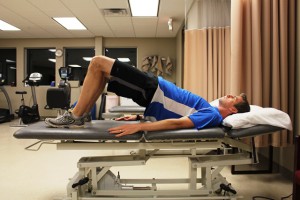Shoulder pain can affect much more than just our comfort. It can limit our ability to pick up our children, carry groceries, or even reach for something on a high shelf. If you’ve been struggling with nagging shoulder pain, there’s a strong possibility it may be due...
A stress fracture is a small crack within a bone. However, unlike acute fractures, which occur from a sudden injury, stress fractures gradually develop over time and are common among athletes, runners, and individuals with physically demanding lifestyles. These tiny,...
Tendons are tough, fibrous tissues that connect muscle to bone and play a critical role in our movement, from helping us swing a tennis racket to allowing us to lift groceries or climb the stairs. But for all their strength and flexibility, tendons are also...
The Most Common Causes of Hip Pain

The hip is the joint where the thigh bone meets the pelvis bone. The top of the thigh bone resembles a ball, and it moves around in a space in the pelvis that looks like a cup – this is why hips are referred to as ball-and-socket joints. When this joint is damaged, pain is generally the result. Typically, hip pain presents as a symptom of a disease or it stems from overuse, playing sports, running, or falling. The following list details the most common causes of hip pain.
Diseases
Arthritis
There are several arthritic conditions, including rheumatoid arthritis and osteoarthritis, which are common causes of hip pain, particularly for older adults. Arthritis leads to the hip joint becoming inflamed and the cartilage that pads the hip bones breaking down. As arthritis progresses, the pain slowly intensifies. Many people with arthritis also experience stiffness and a decreased range of hip motion.
Avascular Necrosis or Osteonecrosis
Osteonecrosis takes place when the blood supply to the hip bone is decreased and causes the bone tissue to die. While this condition can affect other bones, it occurs most frequently in the hip. There are additional causes for osteonecrosis including hip dislocation, fracture, or long-term use of high-dose steroids like prednisone.
Injuries
Muscle or Tendon Strain
Repeated action can strain the ligaments, muscles, or tendons that support the hips. The most frequently occurring strains are hamstring strains and groin pulls. When one of these structures becomes inflamed through overuse, pain may result, making it difficult to execute normal hip movements.
Hip Fractures
With aging, bones can become brittle and weak, which means that hip fractures happen most often in elderly people. If an elderly individual with weakened bones falls, he or she is more likely to have a fracture. Broken hip treatment requires surgery to fix the broken portion with a metal plate and screws, or it simply may need to be replaced altogether.
Bursitis
The bursae are small, fluid-filled sacs that protect the tendons and muscles. These can become inflamed through repetitive activities that irritate or overwork the hip joint. The pain may be sharp or a dull ache.
Tendonitis
Tendons are the thick tissue bands that connect muscles to bones. Tendonitis refers to irritation or inflammation of the tendons. Typically it comes about through repetitive stress from overuse. The most common type of tendonitis to present in the hip region is iliotibial (IT) band tendonitis. The IT band is a thick fibrous tissue band that runs along the outside of the leg and functions together with multiple thigh muscles to offer stability to the exterior area of the knee joint.


